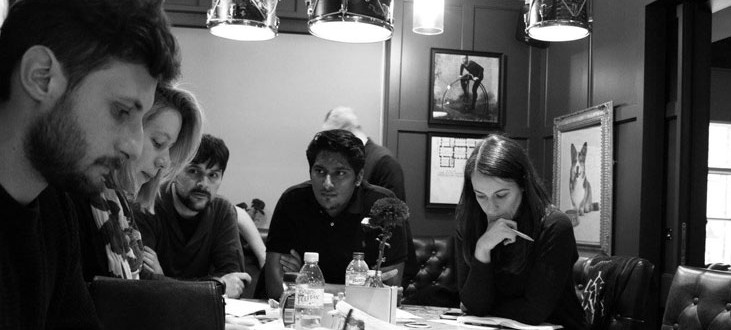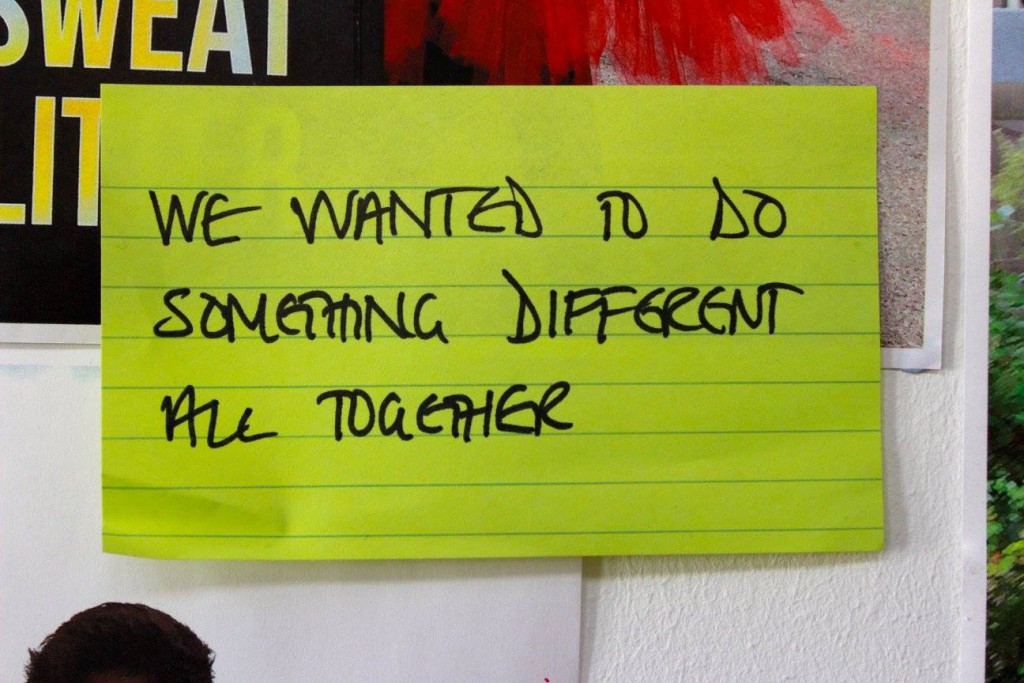Design Thinking and Innovation week at Future London Academy III
We reached Friday, what a great program to close the week. In the morning, we went to Central Saint Martins to talk to the Professor Lorraine Gramman who was inspired by the story of Shirley Pitts, known as The Queen of Thieves, to start a project to Design Against Crime. The DACRC (Design Against Crime Research Centre) focus on social justice by design, which is directly linked to cutting-edge design research.
We got very hooked with Lorraine talk and the passion she puts on what she does, she explained to as that in order to to design against crime you have to understand the User and the Abuser. 95% of the people don’t commit crime and they have to be taken in consideration when you design, is not a matter of avoiding crime at any cost. Once that is understood we can start designing and first thing to do is understanding how criminals work.
DACRC uses the Design Thinking approach and extends it to research mis-use and abuse in order to figure out how best to design for the real world. The research should be used to create the brief of the project, she said.
Professor Gramman also talked about a topic we love: democratizing innovation – how to open innovation in the research. To do so, you should approach in a multi-disciplinary and collaborative way. That includes, partnerships, networks, specialized teams and users.
A great example is a research project to reduce theft on the cash machines, which was open to kids who shared with their parents the different ideas that were finally tested.
This brings us to recommend and encourage entrepreneurship and social ventures as part of the design research process.
Lorraine Gramman showed us an amazing project where they worked together with DESIS (Design for Social Innovation towards Sustainability) to investigate how to work with prisons.
They applied a Design Thinking methodology to work and get prisoners involved and work on projects. The results were superb, they learnt to conceptualize within a week and how to make a business in a very short period of time. They got so involved that they wanted to start a MakerSpace inside the prison.
This tells about the immense potential the Design Thinking has, even in personal territory. It does not matter if the results were good (they actually were) or not. The important thing is that it proves that people, who initially didn’t want to be lectured ended up creating new projects, developing collaborational skills and increasing self-control and problem-solving skills. And all that in only a 8-week classes program!
After the awesome morning we enjoyed at Central Saint Martins we were eager for more on the way to visit Territory Studio where we were meeting David Sheldon Hicks, co-founder and creative director. He showed us their facilities where they work on the Big Screen industry on films such as The Martian or The Avengers and also on other digital services as games, brands and visual effects.
We got our eye on their working and presentation method. The efficiency is supreme, they work on very tight deadlines which make them to be very productive. What was more impressive to me is the fact that they make the modifications of the project they are presenting to the client while the client is sent to enjoy a 2 hours coffee at the bar. This agile method makes the decision maker more comfortable and easy to make an agreement on that day.
Another point I would like to underline and that we share with them is the pure no-goal research projects they make during a part of their working time from which they create commercial projects.
And last, but of course, not least we had the privilege of meeting Michael Wolff, a legend in the Branding sector.
The talk was a masterclass of experience and knowledge on which he explained to us that Design is Behaviour therefore, branding is behaviour.
We get to know each other through little details of behaviour. Brands are the results of how people express themselves through behaviour. That relates to what we talk so often, do you remember? empathy, observation, … 🙂
He ended remembering us that we are all service designers, because we all serve people. That refers to the so often mentioned on our website: we aim to improve people’s lives.
For that, Michael mentioned we have 3 muscles, the muscles of the designers:
- Active noticing.
- Appreciation. What is like to be like another person, putting on someone’s shoes. That means taking off yours, so leaving behind all your prejudices.
- Imagination, which is not possible without the 2 former points.
And for all that, you have to decide which is your purpose in life and empower yourself with self-expression: Use the power of language.
We finish this fabulous week like that and, of course, having a toast all together.
The week that I would resume in words:
People: because all the challenges we face, have their end and their beginning in people.
Experience: we are no longer looking for products or services, we all want experiences to tell to our friends and family and coming to this Design Thinking and Innovation week has been a very good one.
Passion: we talked about, methodologies, research, techniques, software, etc. But what links all the brilliant people we met is their passion on what they do. They wouldn’t be that good if they didn’t have passion.
I would like to thank again Future London Academy for their invitation to be an active part of the Design Thinking and Innovation week. I definitely encourage you to come to the next edition to learn about design thinking and innovation, but mostly to live and share a truly inspiring experience with many talented people from all over the world.
Photos by Marta Nardo and Steve Russell





